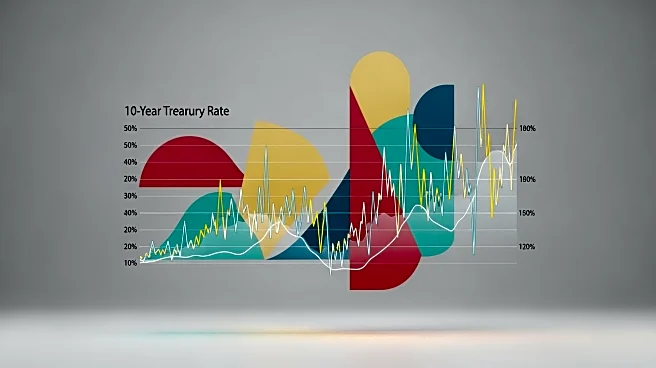What's Happening?
The Federal Reserve Bank of Chicago has introduced a new data set called the Quarterly Industry Labor Productivity (QILP) data. This data set provides timely quarterly measures of growth in output per hour, also known as average labor productivity (ALP),
for 87 industries starting from 2006. The QILP data aims to fill the gap in timely high-frequency data on productivity growth at the industry level, which is crucial for understanding cyclical movements and long-term trends in the U.S. economy. The data is consistent with the Bureau of Economic Analysis' GDP by industry data and aligns with the Bureau of Labor Statistics' Productivity and Costs release. The introduction of this data set allows for a more detailed analysis of industry-level productivity growth, particularly in the nonfarm private sector, and provides insights into the shifts in productivity growth since the onset of the COVID-19 pandemic.
Why It's Important?
The introduction of the QILP data set is significant as it provides a more granular view of productivity growth across different industries, which is essential for policymakers, economists, and businesses to make informed decisions. Understanding industry-level productivity growth can help identify which sectors are driving economic growth and which are lagging. This information is crucial for developing targeted economic policies and strategies to enhance productivity and economic performance. Additionally, the data highlights the shifts in productivity growth patterns since the pandemic, revealing that productivity gains have become more unevenly distributed across industries. This shift underscores the need for a nuanced approach to economic recovery and growth strategies, particularly in sectors that have been significantly impacted by the pandemic.
What's Next?
The availability of the QILP data set is expected to facilitate more detailed and timely economic analysis, enabling stakeholders to better understand the dynamics of productivity growth across industries. Policymakers may use this data to tailor economic policies that address specific industry needs and challenges. Businesses can leverage the insights from the data to optimize their operations and investment strategies. As the data set continues to be updated, it will provide ongoing insights into the evolving landscape of U.S. productivity growth, particularly in the context of technological advancements and shifts in economic activity. The data may also prompt further research into the factors driving productivity growth and the implications for long-term economic development.
Beyond the Headlines
The introduction of the QILP data set also raises important questions about the role of technology and innovation in driving productivity growth. The data reveals that industries such as computer systems design, online retail, and data processing have become key drivers of productivity growth since the pandemic. This trend highlights the increasing importance of digital transformation and technological adoption in enhancing productivity. It also underscores the need for workforce development and reskilling initiatives to ensure that workers are equipped to thrive in a rapidly changing economic landscape. Furthermore, the data set provides a valuable tool for analyzing the impact of structural changes in the economy, such as the shift towards remote work and the growing reliance on digital services.














